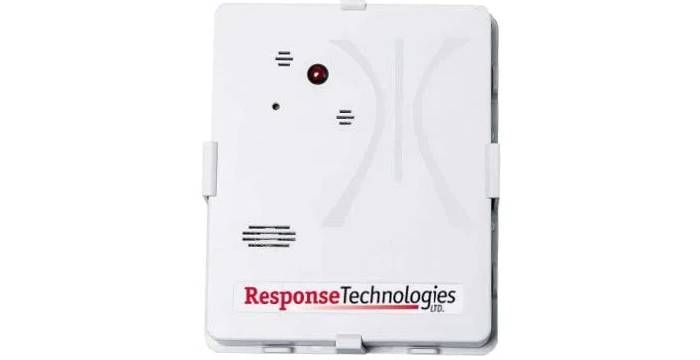In a world where public safety is a growing concern, innovative technology is becoming a crucial part of emergency response systems. Among these innovations, gunshot detection technology stands out as a powerful tool in identifying and responding to firearm-related incidents. By offering real-time alerts and precise location data, these systems are revolutionizing the way emergencies are handled, helping first responders react swiftly and effectively when every second matters.
How Gunshot Detection Systems Work
Gunshot detector relies on an array of sensors strategically placed in urban areas, public buildings, or facilities where the risk of gun violence exists. These sensors can identify the distinct sound pattern produced by a firearm discharge. When a loud noise similar to a gunshot is detected, the system quickly evaluates its characteristics—such as frequency, volume, and sound pattern—to determine if it was caused by a firearm.
After confirmation, the system pinpoints the precise location of the gunfire and promptly relays the details to emergency responders. This typically happens in a matter of seconds, bypassing the need for a 911 call and allowing responders to act quickly and with precise intelligence.
Enhancing Emergency Response Time

One of the most significant advantages of gunshot detection technology is its ability to reduce response times. In traditional scenarios, law enforcement must rely on witnesses or victims to call in a report, which can delay the arrival of help. In contrast, detection systems send immediate alerts with accurate location details, allowing first responders to reach the scene more efficiently.
This speed can be crucial in saving lives, stopping ongoing threats, and securing areas before further harm occurs. In many cases, quick intervention is the difference between a fatal outcome and a life saved.
Improving Situational Awareness
Responding to an active shooter or gun-related emergency requires more than speed—it demands understanding. Gunshot detection systems not only alert responders to the location but also provide valuable context. For example, they can identify whether multiple shots were fired, the time of each discharge, and whether gunfire is moving across locations.
This data allows officers or security personnel to approach the scene with greater caution and strategy. It reduces the risk of ambushes, helps prioritize areas for lockdown, and can even guide evacuations more safely.
Supporting Evidence Collection
These technologies do more than aid immediate response—they also play a vital role in post-incident investigations. The data collected by the system serves as a timestamped, location-specific record that can help confirm witness statements or identify inconsistencies.
Recorded information, such as the number of shots fired and their intervals, helps reconstruct the sequence of events. This can be instrumental in building legal cases or determining whether the use of firearms complied with regulations. In some instances, it even helps locate suspects who flee the scene before law enforcement arrives.
Reducing False Alarms and Miscommunication
Unlike traditional emergency alerts that may come from uncertain or emotionally distressed callers, gunshot detection systems are designed to minimize human error. They use machine learning algorithms and audio analysis to distinguish between gunfire and other loud noises like fireworks, engines, or construction work.
Although no technology is perfect, recent improvements have greatly minimized the chances of false alerts. This means that emergency services can focus their efforts on genuine threats without wasting time or resources.
Challenges and Considerations
Despite the many advantages, gunshot detection systems are not without their challenges. One common concern is privacy. Since these sensors are placed in public or semi-public areas, some worry about the potential for unwanted audio recordings. However, many systems are designed only to capture short sound bursts triggered by gunshot-like events, rather than continuous audio.
Another issue is cost. Setting up a comprehensive network of sensors can be expensive, especially for large or financially limited communities. Maintenance, software updates, and integration with existing emergency systems also require ongoing investment.
In addition, while these systems are powerful tools, they are not standalone solutions. Their effectiveness is greatest when combined with trained personnel, coordinated response protocols, and community outreach.
Expanding Use Cases
Although initially developed for use in city streets and public spaces, gunshot detection technology is now being implemented in various settings. Schools, hospitals, transportation hubs, and corporate campuses are among the growing list of environments adopting this technology.
The versatility of these systems allows them to be tailored to different needs, whether that means wide-area surveillance or localized protection within a specific building. The ability to integrate with alarms, security cameras, and communication systems further enhances their value in emergency planning.
Future Potential
In the coming years, gunshot detection is expected to evolve through more intelligent and interconnected technologies. Some systems are being enhanced with artificial intelligence to improve detection accuracy and reduce false positives. Others are incorporating additional sensors, such as thermal or infrared, to provide a multi-layered view of an event.
As communities seek more proactive ways to prevent violence and protect public spaces, this technology may become a standard part of modern infrastructure. Its continued evolution promises faster, smarter, and safer responses to gun-related emergencies.
Conclusion
Gunshot detection systems mark a significant advancement in enhancing public safety and improving emergency response efforts. By providing rapid, accurate alerts and improving situational awareness, it empowers law enforcement and first responders to act decisively during critical incidents. Though challenges remain, the benefits are clear: faster response times, better evidence, and greater overall safety. As gunshot detection systems advance and become more widely available, their impact on enhancing community safety is set to increase further.
Post Comment
Be the first to post comment!


